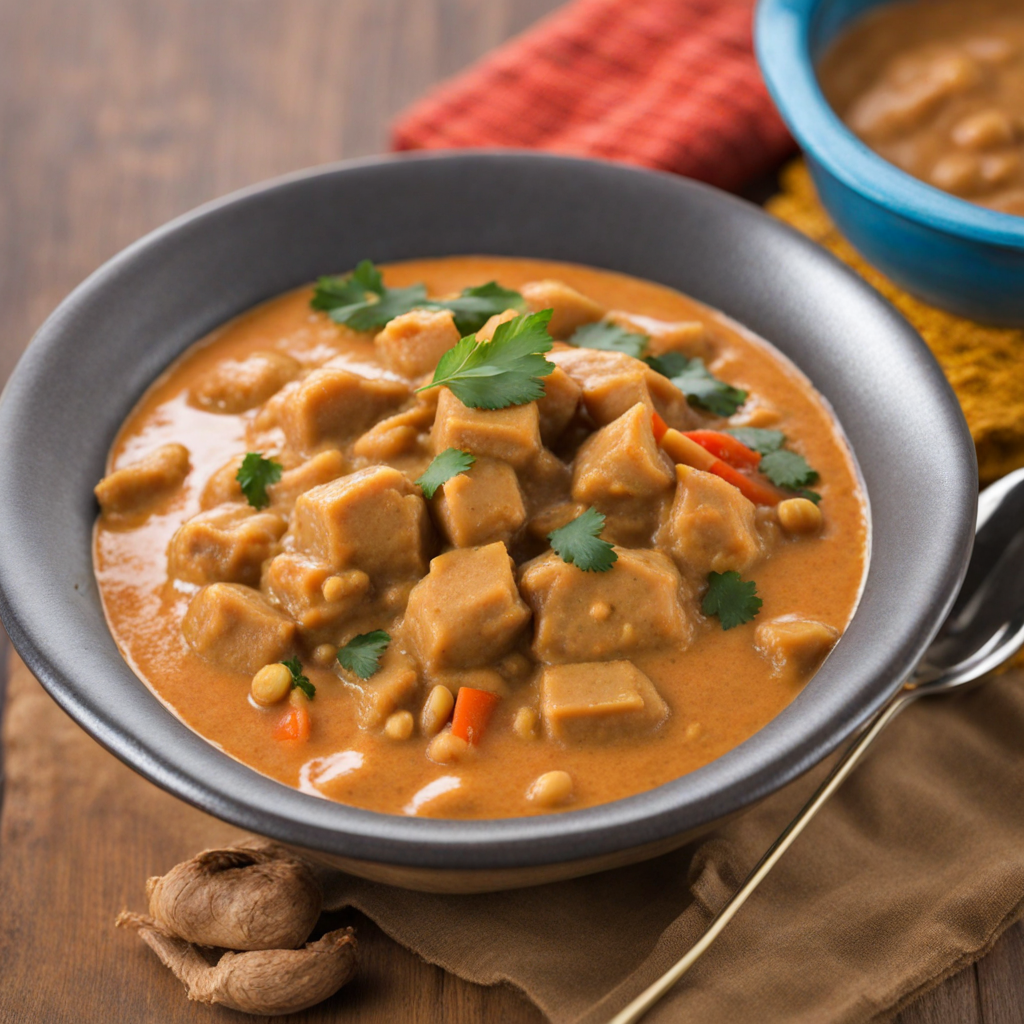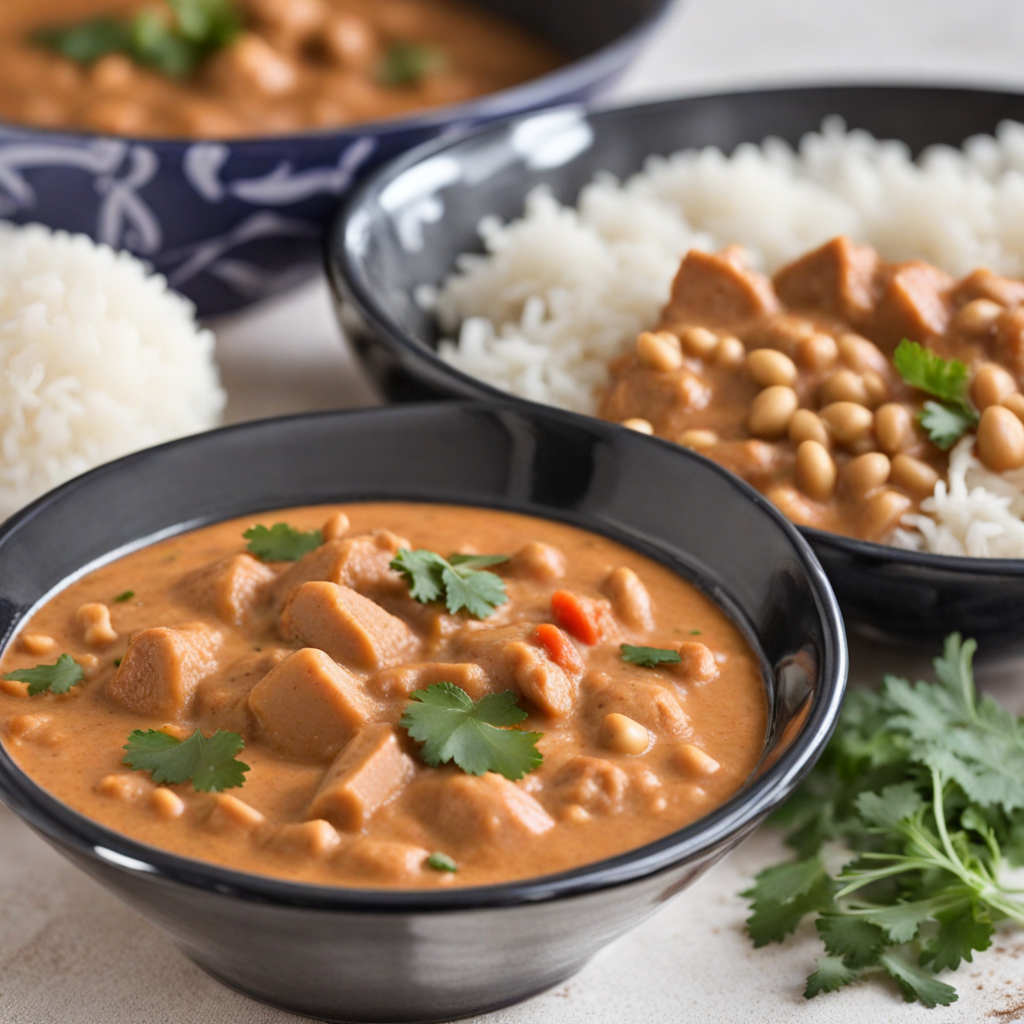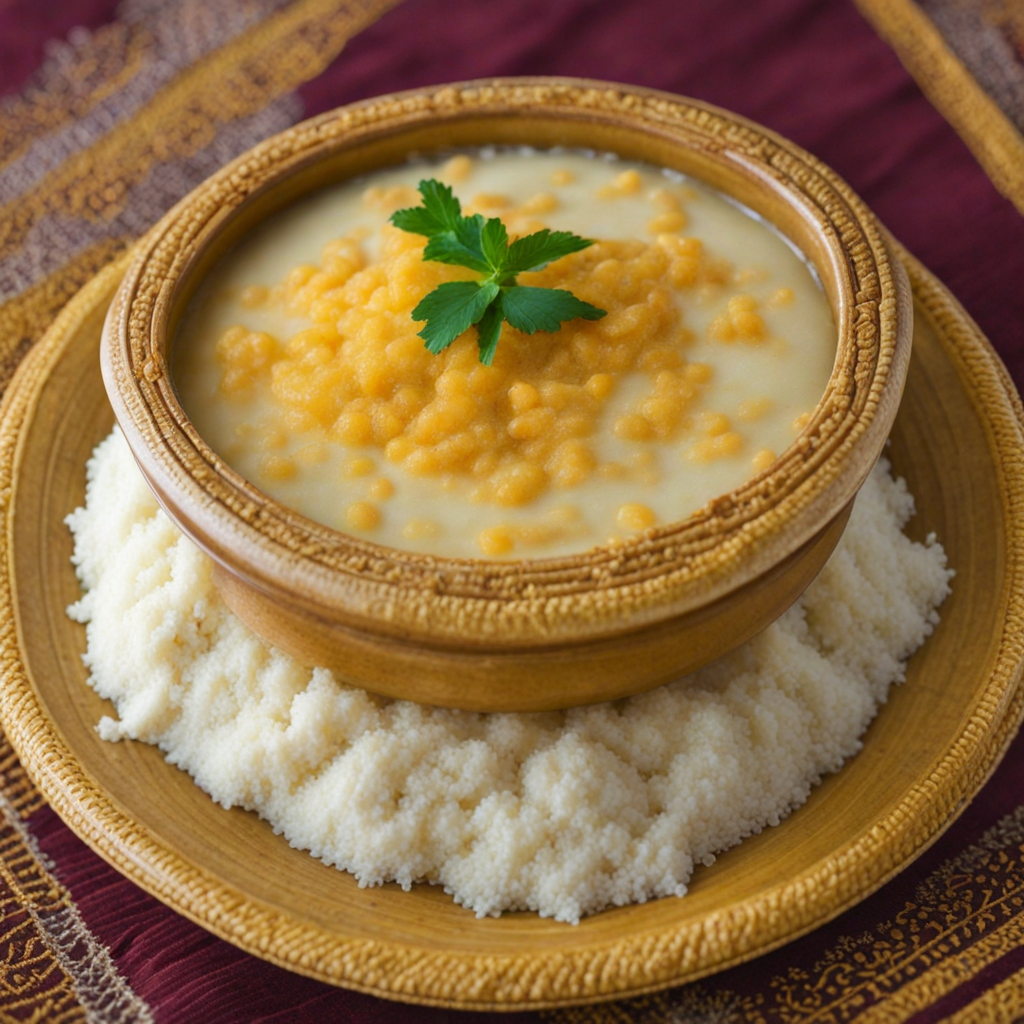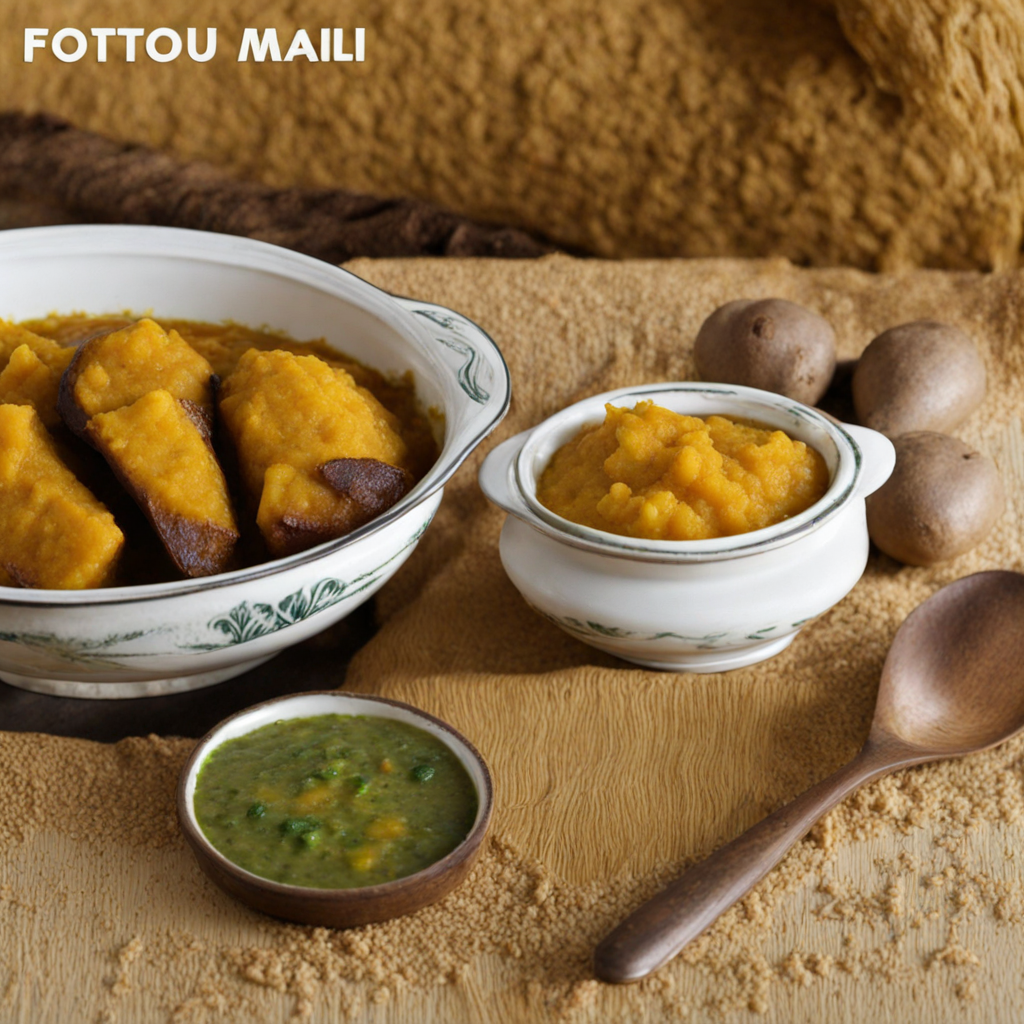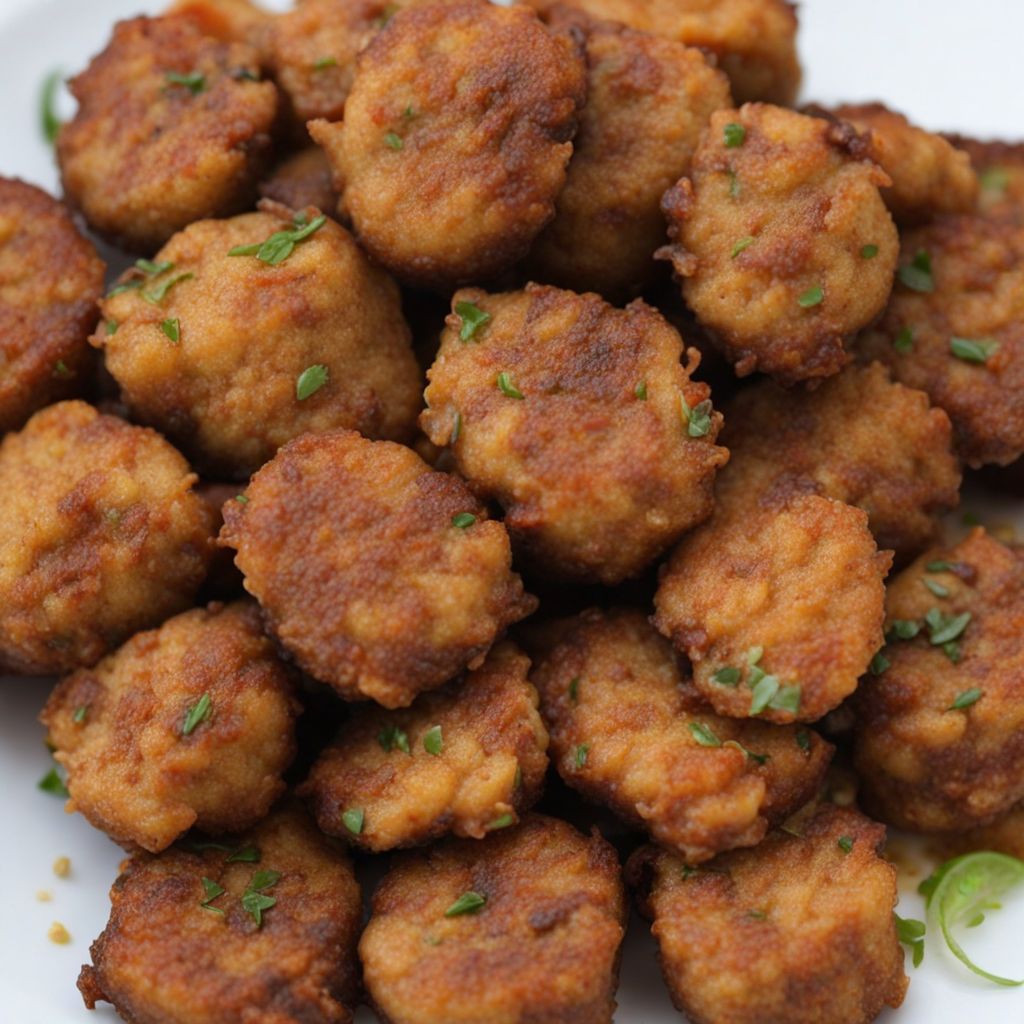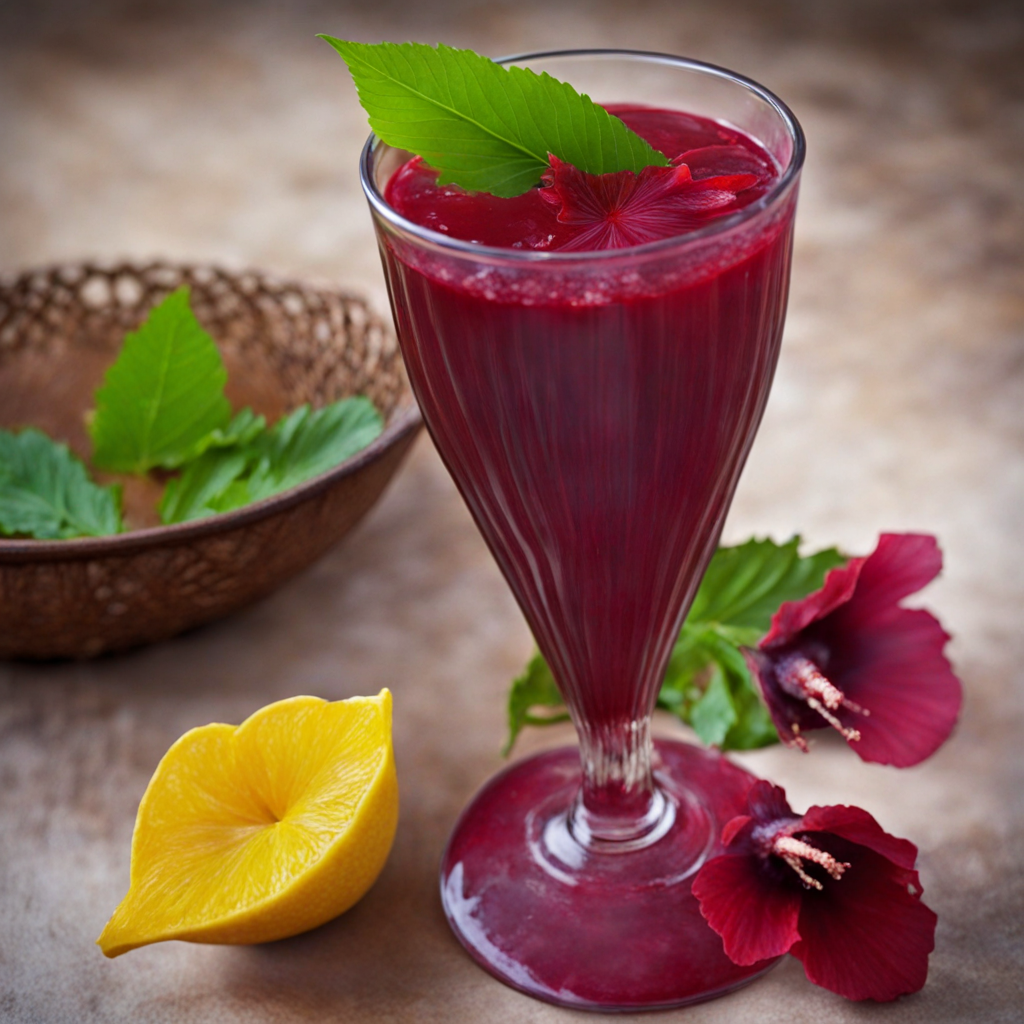Maafe
Maafe, also known as groundnut stew, is a traditional dish hailing from Mali that captivates the senses with its rich flavors and hearty texture. At its core, Maafe consists of a luscious peanut sauce made from ground peanuts or peanut butter, simmered to perfection with a blend of spices. The sauce is typically combined with a variety of meats, such as chicken, beef, or goat, and often includes vegetables like sweet potatoes, carrots, and okra, creating a harmony of flavors that reflect the agricultural bounty of West Africa. The dish is often served over rice or alongside fufu, allowing diners to soak up the delicious sauce with each bite, making it a comforting and fulfilling meal. The preparation of Maafe is a labor of love, often involving slow cooking to allow the flavors to meld beautifully. The peanuts lend a creamy richness that balances the savory notes of the meat and the earthiness of the vegetables. Spices such as garlic, onion, and sometimes chili are added to enhance the flavor profile, while a touch of salt and perhaps a squeeze of lime or a dash of hot sauce can elevate the dish further. Each family may have its own unique twist on the recipe, making Maafe a versatile dish that can reflect personal tastes and regional variations. Enjoying Maafe is not just about the taste; it's also about the experience of sharing a meal with others. In Mali, it is common to serve this dish during communal gatherings and celebrations, symbolizing hospitality and togetherness. As you take your first bite, the warm, nutty flavors envelop you, transporting you to the heart of Malian culture. This delightful dish offers a new taste adventure, inviting you to explore the culinary richness of West Africa while celebrating the simple pleasures of good food and company.
How It Became This Dish
Maafe: A Culinary Journey Through Mali’s Heart and Soul Maafe, also known as groundnut stew, is a beloved dish deeply woven into the cultural tapestry of Mali and the broader West African region. This rich, flavorful stew, characterized by its creamy peanut sauce, reflects the history, traditions, and agricultural practices of the people who inhabit this vibrant land. To truly appreciate maafe, one must delve into its origins, cultural significance, and the evolution it has undergone over time. Origins: A Blend of Influences The roots of maafe can be traced back to the ancient empires that flourished in West Africa, particularly the Mali Empire, which existed from the 13th to the 16th centuries. This empire was a melting pot of cultures, languages, and culinary practices, with trade routes connecting it to North Africa and beyond. The introduction of peanuts to West Africa is believed to have occurred in the 16th century, likely brought by Portuguese traders from South America. Peanuts quickly adapted to the local climate and became a staple crop, eventually finding their way into various traditional dishes. Maafe itself is thought to have originated among the Mandinka and Bambara peoples of Mali, who have long had a rich tradition of using groundnuts in their cooking. The dish’s core ingredient, groundnut paste, not only adds flavor but also provides a significant source of protein, making it an essential part of the diet in a region where food security can be a concern. Cultural Significance: More Than Just a Meal In Mali, maafe transcends mere sustenance; it is a symbol of hospitality, community, and celebration. The dish is often prepared during special occasions, such as weddings, festivals, and family gatherings. Sharing maafe with family and friends reinforces social bonds and signifies generosity. Traditionally, it is served communally, with diners using their hands to scoop up the stew with pieces of rice or fufu, a starchy side made from cassava or yams. The preparation of maafe is often a communal activity that brings families together. Women, who are typically the primary cooks, gather to prepare the ingredients, often participating in lively conversation and storytelling. The act of cooking maafe, therefore, becomes a cultural ritual that strengthens familial ties and preserves culinary traditions. Development Over Time: A Culinary Evolution As Mali's history unfolded, so too did the evolution of maafe. Different regions and ethnic groups have put their unique spin on the dish, resulting in a variety of interpretations. While the basic foundation remains the same—peanut sauce served with meat or vegetables—the choice of ingredients and accompanying sides can vary significantly. In urban areas, where access to diverse ingredients is more prevalent, you might find maafe made with chicken, lamb, or beef, often enriched with vegetables such as carrots, potatoes, and okra. In contrast, rural communities may prepare a simpler version, focusing on the flavors of the peanuts and local vegetables. Vegetarian versions of maafe have also emerged, reflecting a growing trend towards plant-based diets and accommodating dietary restrictions. The globalization of culinary practices in the 20th and 21st centuries has introduced even more variations of maafe. As Malians have migrated to other countries, they have carried their culinary traditions with them, leading to the emergence of diaspora communities that celebrate their heritage through food. Restaurants in cities like Paris, New York, and London now serve maafe, often with a modern twist, appealing to a broader audience while honoring its origins. Another significant influence on the evolution of maafe has been the introduction of modern cooking techniques and ingredients. While traditional methods involve slow-cooking the stew over an open flame, contemporary cooks may opt for pressure cookers or electric stoves to save time. Additionally, the use of commercially prepared peanut butter has made it easier to prepare maafe, though purists often argue that homemade peanut paste yields a superior flavor. Maafe in the Context of Mali's Culinary Heritage Mali’s culinary landscape is diverse, with regional specialties reflecting local ingredients, traditions, and histories. However, maafe stands out as a unifying dish that transcends ethnic boundaries. Its versatility allows it to be embraced by various groups, each adding their own local flair. In this way, maafe acts as a culinary ambassador, fostering unity and understanding among Mali’s diverse populations. Moreover, maafe has become a symbol of resilience. The challenges faced by Mali—such as political instability, economic hardship, and environmental issues—have influenced food security and agricultural practices. The adaptability of maafe allows it to remain a staple, even in times of adversity. When resources are scarce, the dish can be made with whatever ingredients are available, embodying the creativity and resourcefulness of the Malian people. Conclusion: A Dish That Tells a Story Maafe is more than just a stew; it is a narrative that encapsulates the history, culture, and spirit of Mali. From its ancient origins in the Mali Empire to its modern-day interpretations around the globe, maafe serves as a testament to the resilience and adaptability of a people connected through food. It is a dish that invites sharing and community, celebrating the bonds that unite families and friends. In a world that often feels fractured, maafe reminds us of the power of food to bring people together. Each bowl tells a story of tradition, innovation, and love, making it not just a meal, but a cherished cultural artifact. As we savor the rich, savory flavors of maafe, we partake in a culinary legacy that has endured through centuries, continuing to nourish and unite generations in Mali and beyond.
You may like
Discover local flavors from Mali


